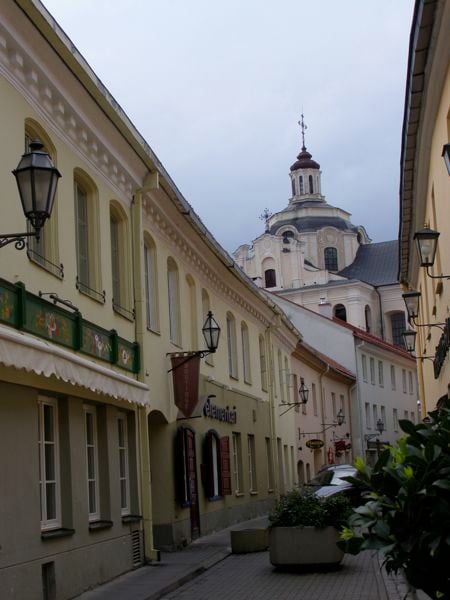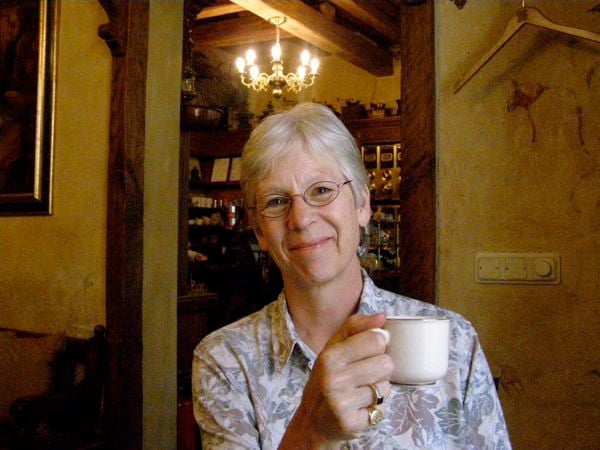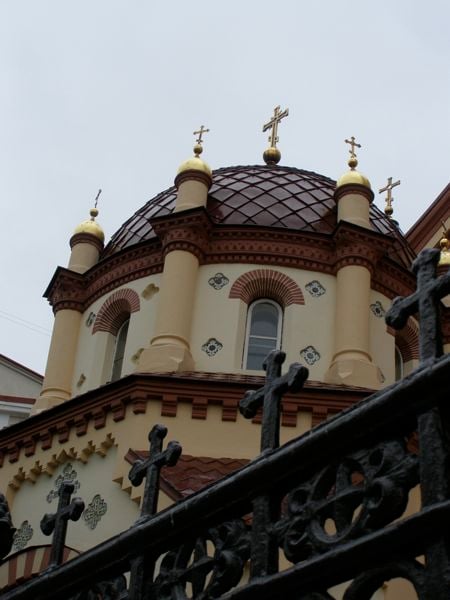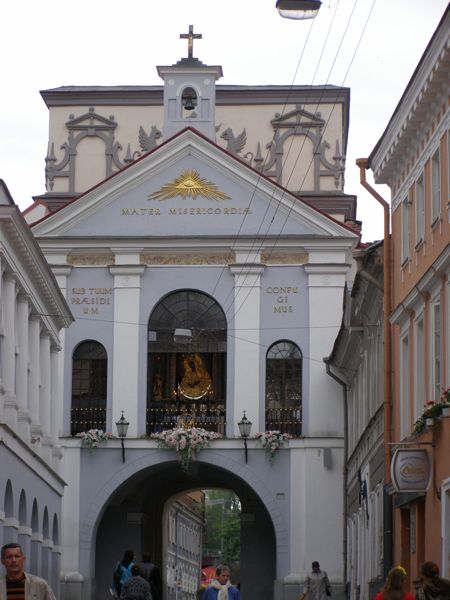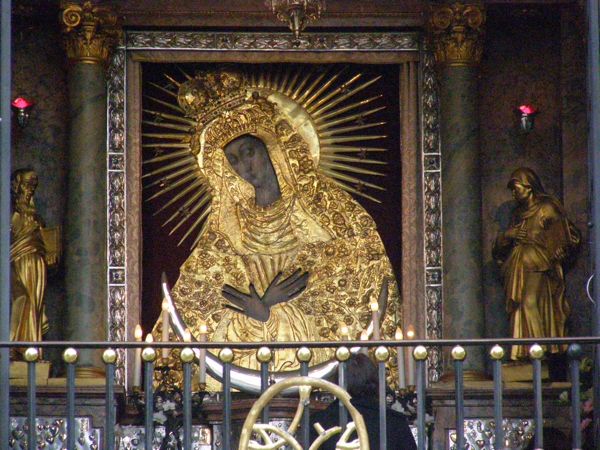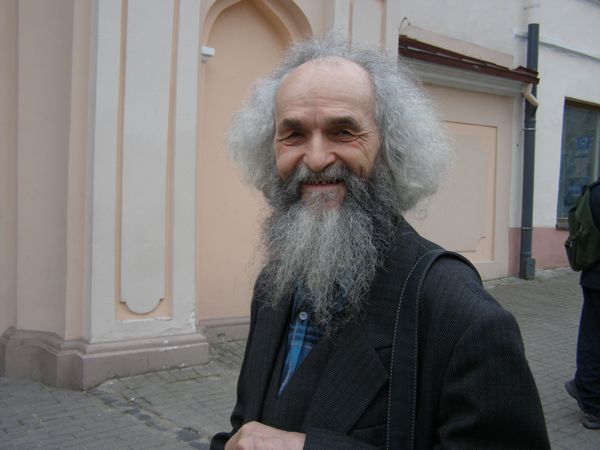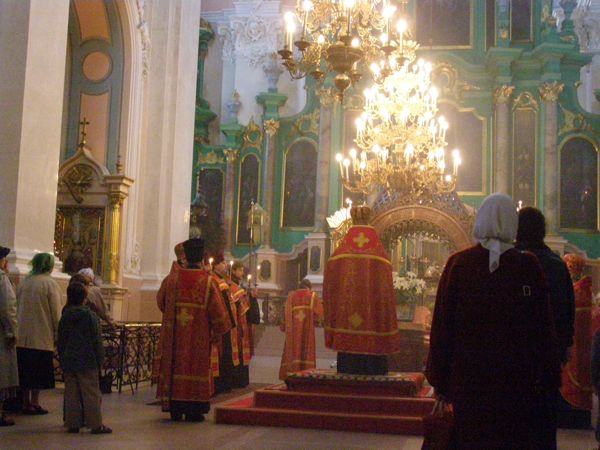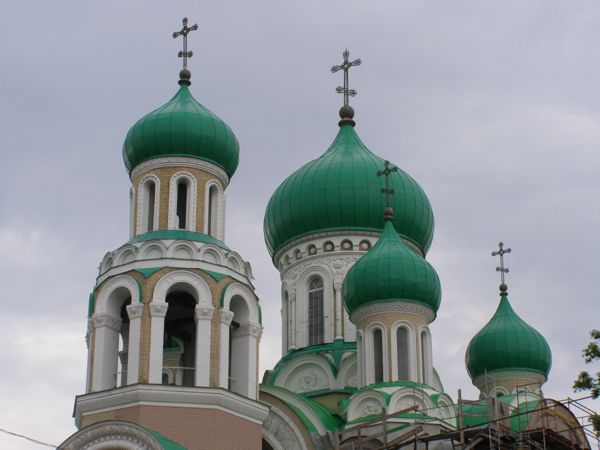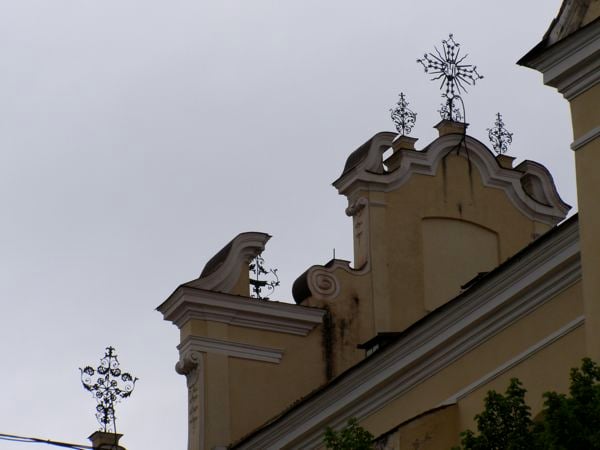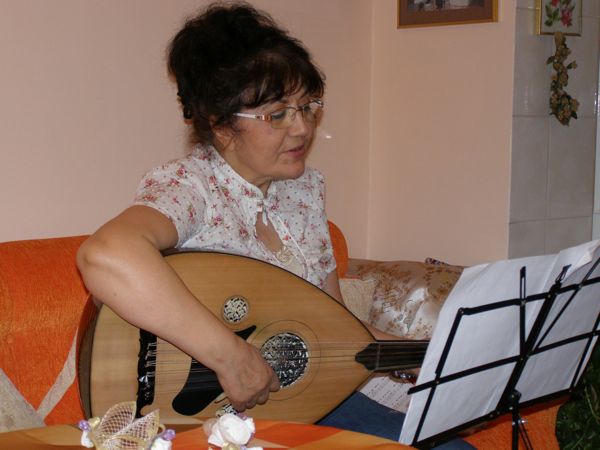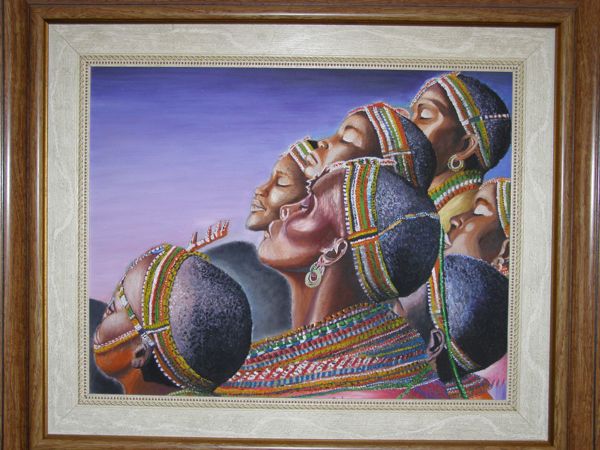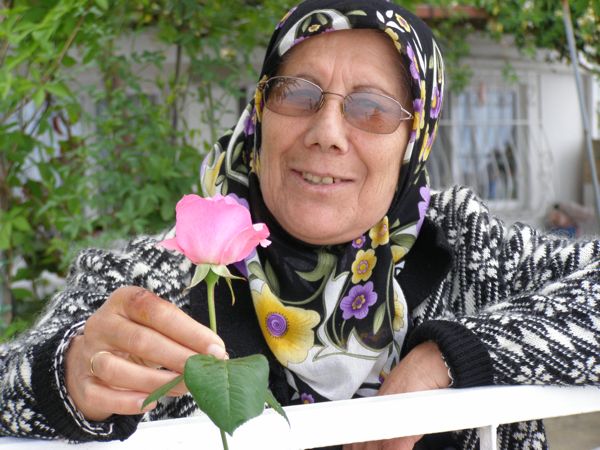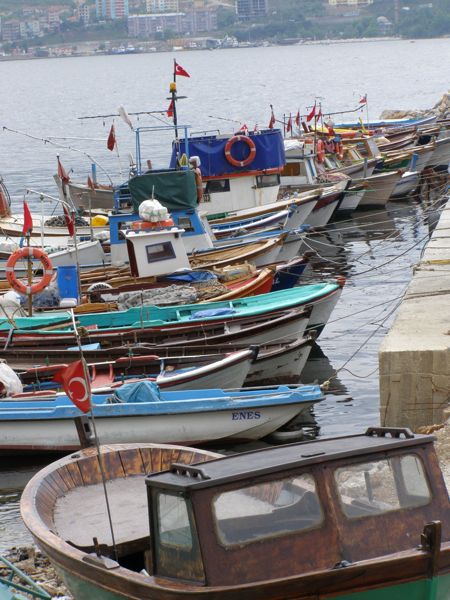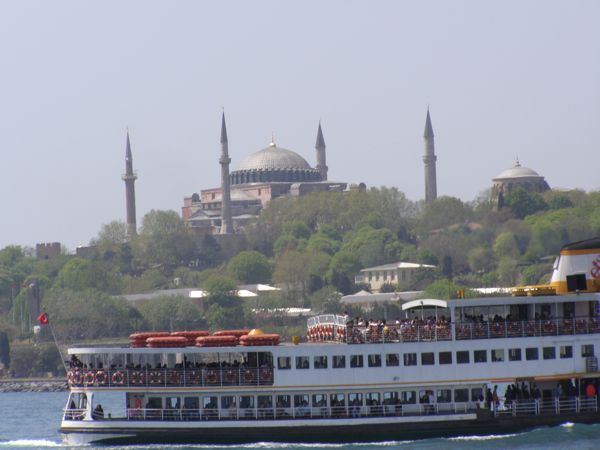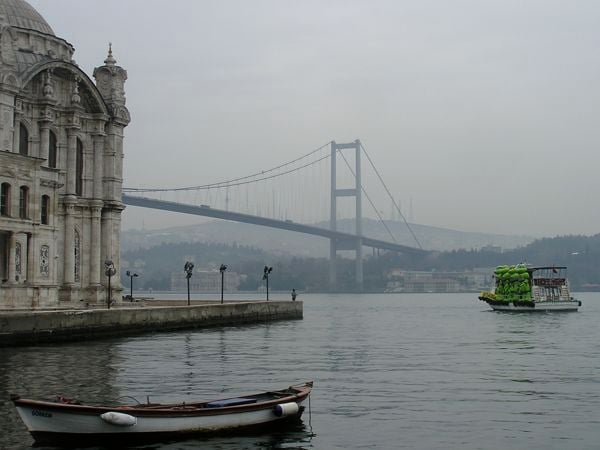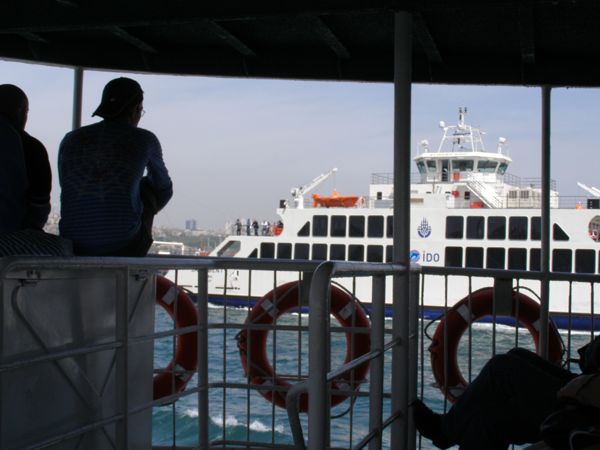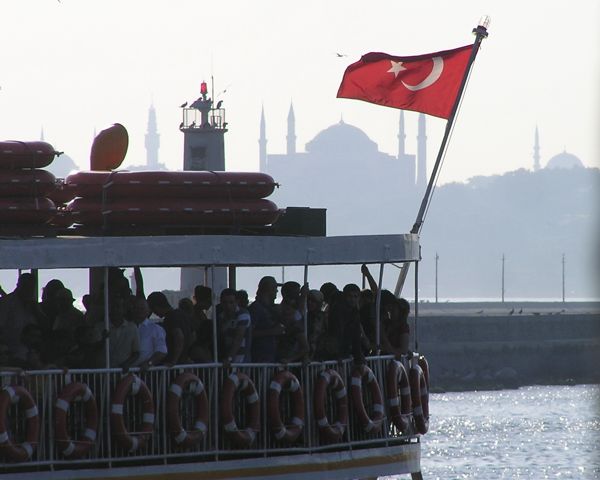I just returned from a whirlwind tour of Vilnius, Lithuania. I know—“Where the heck is that?” you ask. It’s south of Latvia, west of Russia, and borders on the Baltic Sea. My niece Laura drew me there; she’s at the Vilnius University on an exchange from Melbourne.
Laura had said Vilnius was lovely, but I wasn’t prepared for what awaited me. Especially after the circus in Moscow. I took a night flight (duh!), punctuated by a full three hours of being confused, ushered, hushed, and told to wait—by no less than 9 different Moscow airport employees (plus one chauffer). The long and short of it is that in spite of NO smiles or clear communication, I made it from my first flight to a connecting flight to Vilnius. WHEW! I could definitely feel the influence of many years of a communist regime. Inefficient would be an understatement.
Anyway, Laura met me at the Vilnius airport, and after a HUGE warm hug, I was ready for adventure. I’d shown Laura Istanbul, and now it was her turn to play tour guide. She was good!
a typical Vilnius street
After dropping our things at our hotel, we were off! Laura led me through the winding streets of old Vilnius, one of the largest surviving medieval cities in Northern Europe. (According to Wikipedia, its 70 streets and lanes cover 887 acres and encompass 1487 buildings.) It’s an amazing conglomeration of buildings in gothic, renaissance, baroque, and neoclassical styles—amazing! Vilnius University, where Laura is studying, is a formidable complex over 400 years old. Imagine!
Relaxing with a cup of coffee at Skonis ir Kvapis
Our first stop was breakfast (late) at Laura’s favorite teahouse, Skonis ir Kvapis (Smells and Tastes), tucked neatly inside a courtyard. This charming restaurant with its foot-thick walls, vaulted ceilings, and antique décor was the perfect spot for us to unwind, reconnect, and plan our four-day weekend together.
It’s hard to say what were my favorite things—there were many! The beauty of Vilnius is that it’s yet an undiscovered gem: tourism has not yet engulfed the city—but it will. Vilnius clearly rivals Prague in both beauty and charm, yet it’s FAR cheaper and more provincial. The city has a population as small as 300,000, half of which must live and work in the Old Town.
St. Nicholas Church facade
Saturday evening we stumbled into a Russian Orthodox service at St. Nicholas’ Church, just blocks from our hotel. The religious fervor of the participants was awe-inspiring, though not suprising in a country where religious worship was prohibited by the communist party for over 50 years until 1991.
a St. Nicholas Church dome
Crystal clear choral voices swelled from above as the priest infused his dimly-lit sanctuary with incense. There were a good many crossings and bowings by the standing supplicants, men and women of all ages. The decorations in the church were impressive—many obviously precious religious relics.
Next our meanderings brought us to St. Theresa’s Catholic Church, a baroque affair where young children in white robes must have been receiving their first communion—a celebration we’d seen evidenced both Saturday and Sunday all through the city.
Laura then led me to the Gates of Dawn, the last existing gate (of ten) to the city.
The Gates of Dawn
Over the gate is a small chapel with a famous gilt icon, The Blessed Virgin Mary Mother of Mercy, which dates from the early 17th century. As people pass under the gate, they often turn to cross themselves in homage to this holy shrine.
The Blessed Virgin Mary Mother of Mercy
After giving some change to a beggar, we were approached by a friendly, bearded Russian who invited us to a nearby monastery. Who were we to refuse?
our host for the Russian monastery
We were treated to yet another service in an extravagant baroque cathedral, the likes of which I’ve never seen. The entire frontpiece was a flowing, gilt-edged green with three ornately gilded gates, behind which stood the altar. The entire sanctuary was filled with icons, paintings, and shrines, many of which are valuable religious treasures. I later learned that it was The Church of the Holy Spirit, the major Russian Orthodox Church of Lithuania. Its importance was evidenced by the seven red-robed priests who officiated at the service.
The Church of the Holy Spirit Divine Service
I must apologize for the fact that I surreptitiously snapped a few photos before I saw a small sign (the next day) saying “During the Divine Service, walking, talking, and taking pictures inside the church is not allowed.” Oops. I’m sorry. I hate to be disrespectful.
Church of the Holy Spirit, daytime
Laura and I also attended a concert that twice moved me to tears: the first during “Orawa” by Polish composer, Wolciech Kilar, and the second during George Gershwin’s “Rhapsody in Blue,” which I’ve always loved. The Vilnius Symphony Orchestra is incredible.
Church of St. Michael and St. Konstantine
Another memorable experience was our hike to the Church of St. Michael and St. Konstantine, an onion-domed church (with bright green domes) built in 1913 to commemorate the 300th anniversary of the Romanov Dynasty. It was pretty cool, as well as a lovely walk. We even passed a monument to Frank Zappa. Go figure!
some of Vilnius’ many steeples and crosses
My final adventure was a climb up a narrow winding staircase to a tower above the Vilnius University Library. Laura had been brought up there on a tour, and she led me up into a tiny tower for a spectacular view of the city, even more interesting than the view we’d had from the Vilnius Castle Tower.
Oh, there were countless wonderful things we saw and did—too many to note. All I can say is that I’m confident Vilnius is close to being one of Europe’s favorite tourist destinations. I’m just glad I got there when a beer was still under two dollars.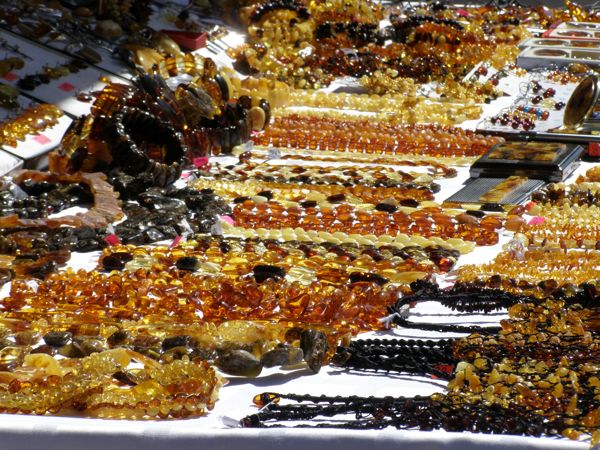
Amber, evident in street markets, shops, and museums of Vilnius
